
| Category | Specifications | Components | Manufacturing Process |
|---|---|---|---|
| Dimensions | Customizable (e.g., 1800mm H x 800mm W x 500mm D) | Steel frame, aluminum panels | Sheet metal fabrication, welding, assembly |
| Display | 21.5" or 32" Touchscreen, Full HD | Capacitive touchscreen, LCD panel | Screen integration, bonding, calibration |
| Processor | Intel i3/i5, 4GB RAM, 128GB SSD | Motherboard, CPU, RAM, SSD | Component assembly, wiring, testing |
| Connectivity | Wi-Fi, Ethernet, 4G/5G (optional) | Network card, SIM module (optional) | Component installation, software configuration |
| Power Supply | 110V/220V AC, Power backup (optional) | Power supply unit, UPS (optional) | Electrical wiring, power testing |
| Enclosure | Weatherproof, vandal-resistant | IP65-rated enclosure, tempered glass | Coating, sealing, quality control |
| Software | Ticketing, schedule info, payment integration | Operating system, custom software | Software installation, testing, user interface |
Bus station kiosks are manufactured through a detailed and precise process to ensure durability and functionality. The process begins with the design phase, where the dimensions and specifications are finalized based on the intended location and usage. High-quality materials like steel and aluminum are selected for the frame and enclosure, which are fabricated through cutting, welding, and assembly. The enclosure is then treated with weatherproof coatings to ensure it can withstand harsh outdoor conditions and is also made vandal-resistant with reinforced structures and tempered glass.
Next, the display unit, typically a high-definition touchscreen, is integrated. This involves bonding the LCD panel to the touchscreen layer, ensuring responsiveness and durability. The internal components, including the motherboard, processor, RAM, and storage, are assembled and connected, followed by the installation of connectivity modules like Wi-Fi, Ethernet, and optional 4G/5G capabilities.
After the hardware assembly, the software is installed, which may include ticketing systems, schedule displays, and payment processing. Finally, the kiosk undergoes rigorous testing for performance, connectivity, and durability before being shipped to the installation site. This meticulous manufacturing process ensures that bus station kiosks are robust, reliable, and user-friendly.
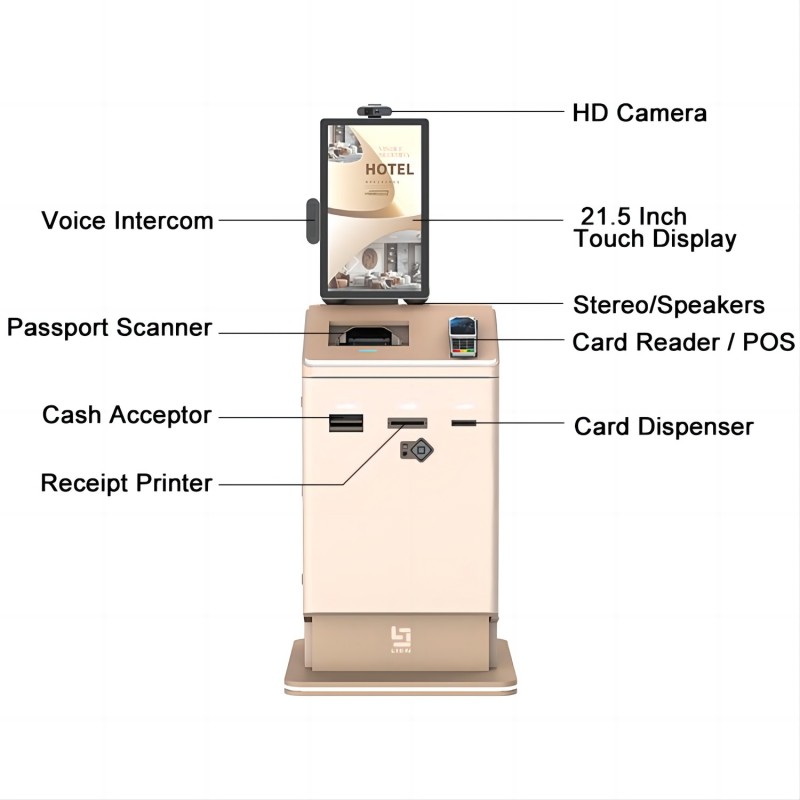
Select Your Service: Begin by tapping the screen to activate the kiosk, then choose the desired service, such as purchasing a ticket, checking bus schedules, or finding route information.
Choose Your Destination: If purchasing a ticket or checking routes, input your destination by selecting from a list or typing the location into the search field.
Select Date and Time: For ticket purchases or schedule checks, select your preferred date and time of travel.
Make a Payment: If buying a ticket, follow the prompts to complete the payment using a card, mobile payment, or cash, depending on the kiosk's capabilities.
Collect Your Ticket or Receipt: After payment, the kiosk will print your ticket or receipt, or it may provide a digital confirmation if it's a paperless kiosk.
Review Information: Finally, review the displayed information, such as bus times, route details, or ticket confirmation, to ensure everything is correct before you leave the kiosk.
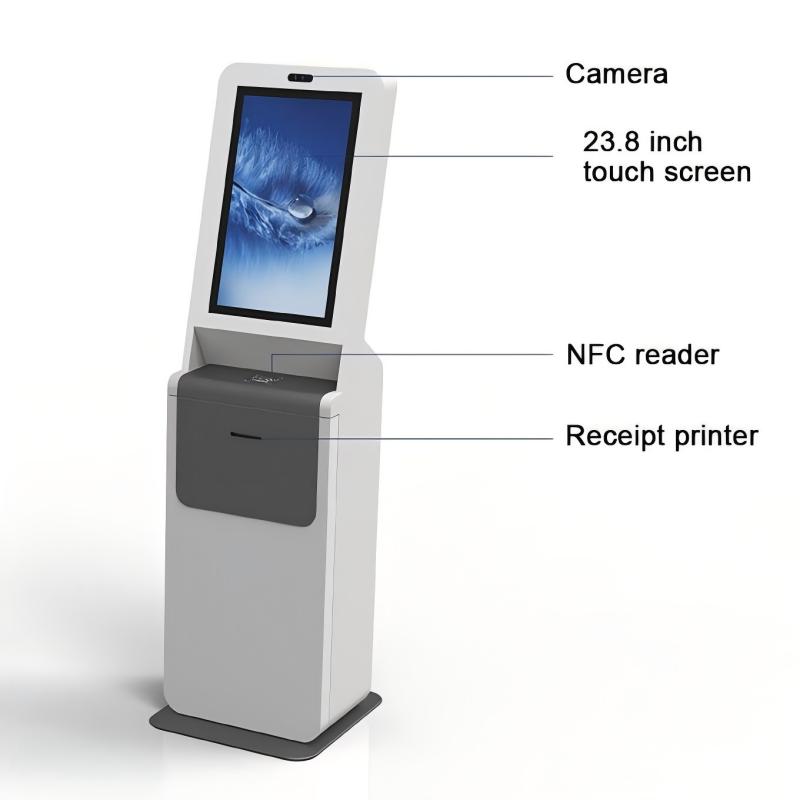
| Application | Description | Benefits | Example Use Cases |
|---|---|---|---|
| Ticket Purchase | Allows users to buy bus tickets for different routes and times. | Convenient, fast, reduces ticketing lines. | Daily commuters, occasional travelers. |
| Route Information | Provides detailed information on bus routes, schedules, and stops. | Helps in planning trips and avoiding delays. | Tourists, first-time users, and regular passengers. |
| Schedule Checking | Displays real-time bus schedules and arrival times. | Reduces waiting time, real-time updates. | Passengers checking bus arrival times. |
| Bus Pass Renewal | Enables users to renew or purchase bus passes for multiple trips. | Simplifies pass management, saves time. | Regular commuters and frequent travelers. |
| Information Updates | Provides updates on bus service changes, delays, or special announcements. | Keeps passengers informed about service changes. | Travelers during peak hours or special events. |
| Customer Support | Offers assistance for inquiries, complaints, or feedback about bus services. | Enhances user experience and problem resolution. | Passengers needing help or providing feedback. |

Screen Size and Resolution: Customizable displays ensure optimal visibility and readability for various weather conditions and user needs.
Enclosure Design: Kiosks can be designed to withstand environmental factors such as rain, wind, and sun. Options include weatherproof casings and robust materials for durability.
Interactive Features: Touchscreen interfaces can be customized with user-friendly software to facilitate ticket purchasing, route inquiries, and schedule updates. Multilingual support can be added to accommodate diverse passengers.
Payment Systems: Integration of various payment methods, including credit/debit cards, mobile payments, and cash handling options, ensures convenience for users.
Accessibility Options: Features such as braille keypads, audio instructions, and adjustable heights help cater to all users, including those with disabilities.
Branding and Aesthetics: Customizable exterior designs and colors allow the kiosk to match the station’s branding or stand out for visibility.
Security Features: Options like surveillance cameras and secure payment terminals enhance the safety and integrity of transactions.

Bus station kiosks integrate robust hardware and versatile software to offer efficient and reliable service. Hardware typically includes a durable touch screen for user interaction, a high-performance computer system to run the kiosk software, and secure payment terminals for transactions. The kiosks often feature weatherproof enclosures to protect internal components from environmental elements. Software is designed for ease of use and includes functionalities such as ticket purchasing, schedule viewing, and real-time updates. It may support multiple languages and integrate with transit management systems for accurate information. Together, the hardware and software ensure that the kiosk operates smoothly, providing a user-friendly experience while maintaining high performance and reliability.
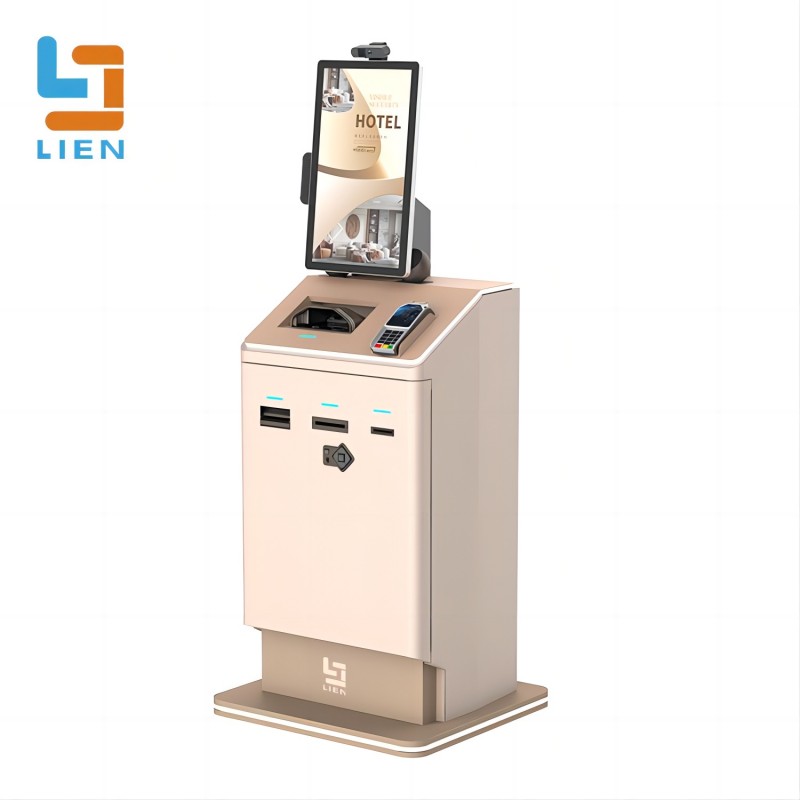
Efficiency: Streamlines ticket purchasing and information retrieval, reducing wait times and improving the overall efficiency of bus station operations.
Accessibility: Provides 24/7 access to ticketing and schedule information, accommodating passengers who travel at odd hours or during non-business times.
Cost-Effective: Reduces the need for additional staff to manage ticket sales and information services, leading to lower operational costs.
Enhanced User Experience: Offers a user-friendly interface with real-time updates on schedules, delays, and available services, improving the passenger experience.
Data Collection: Gathers valuable data on passenger preferences and usage patterns, which can be used to optimize services and improve transit planning.
Reduced Congestion: Minimizes lines and congestion at ticket counters and information desks, creating a smoother flow of passengers in the bus station.
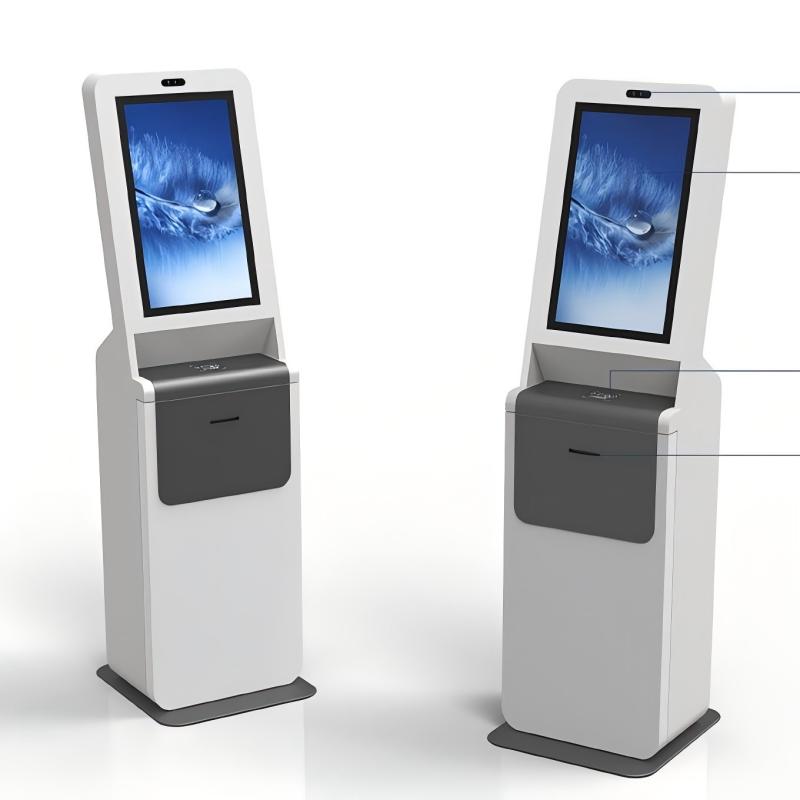
The cost of a bus station kiosk varies based on its features and customization. Generally, it includes hardware, software, installation, and maintenance. Basic models start around $2,000, while advanced kiosks with extensive features can exceed $10,000. Additional costs may include network setup, integration with existing systems, and ongoing software updates.
Operational Efficiency: Reduces labor costs by automating ticket sales and information services, leading to quicker returns on investment through decreased staffing needs.
Increased Revenue: By offering 24/7 service, kiosks can boost sales and ticketing opportunities, leading to higher revenue generation.
Improved Customer Experience: Enhances passenger satisfaction and reduces congestion at service counters, potentially increasing ridership and customer loyalty.
Data Insights: Provides valuable data on passenger behavior and preferences, helping optimize service offerings and improve operational strategies.
Long-Term Savings: While initial costs are significant, the reduction in staffing and operational inefficiencies can lead to substantial long-term savings and quicker ROI.
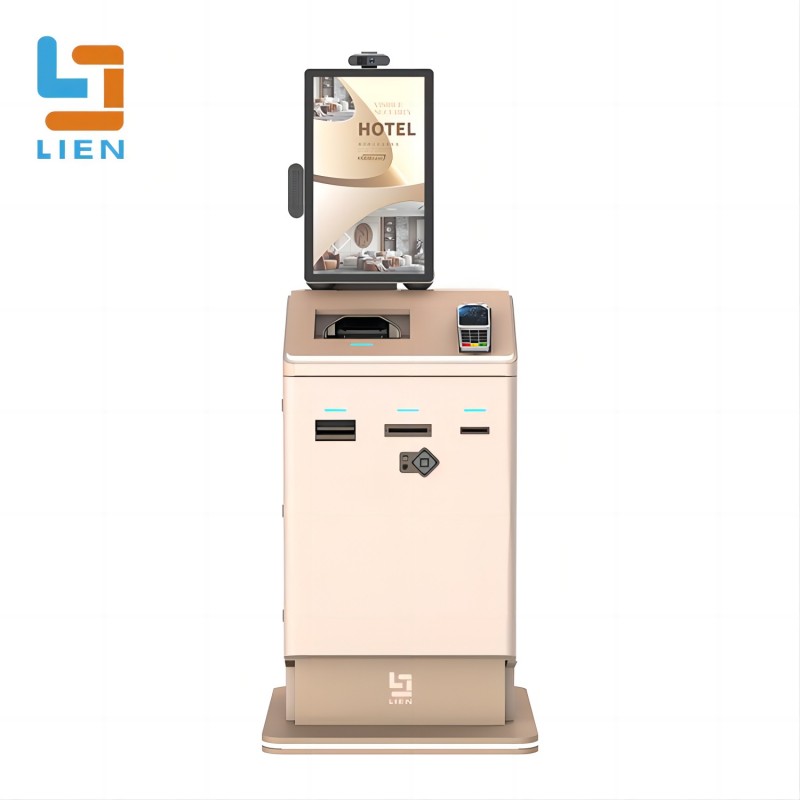
Functionality: Assess the kiosk's ability to handle various tasks such as ticket sales, real-time schedule updates, and passenger information. Ensure it meets the specific needs of the bus station.
Durability: Choose a kiosk designed to withstand high-traffic environments and varying weather conditions if it's placed outdoors. Look for robust materials and high-quality construction.
User Interface: The kiosk should have an intuitive, user-friendly interface suitable for all passengers, including those with disabilities. Consider touch screens, multilingual support, and clear navigation.
Integration: Ensure the kiosk can seamlessly integrate with existing systems such as ticketing, scheduling, and payment processing. Compatibility with current software and hardware is crucial.
Maintenance and Support: Evaluate the manufacturer's support services, including installation, maintenance, and repair options. Reliable technical support and service agreements can minimize downtime.
Cost vs. ROI: Consider the total cost of ownership, including purchase, installation, and ongoing maintenance. Analyze potential returns on investment in terms of operational efficiency, increased revenue, and improved customer satisfaction.
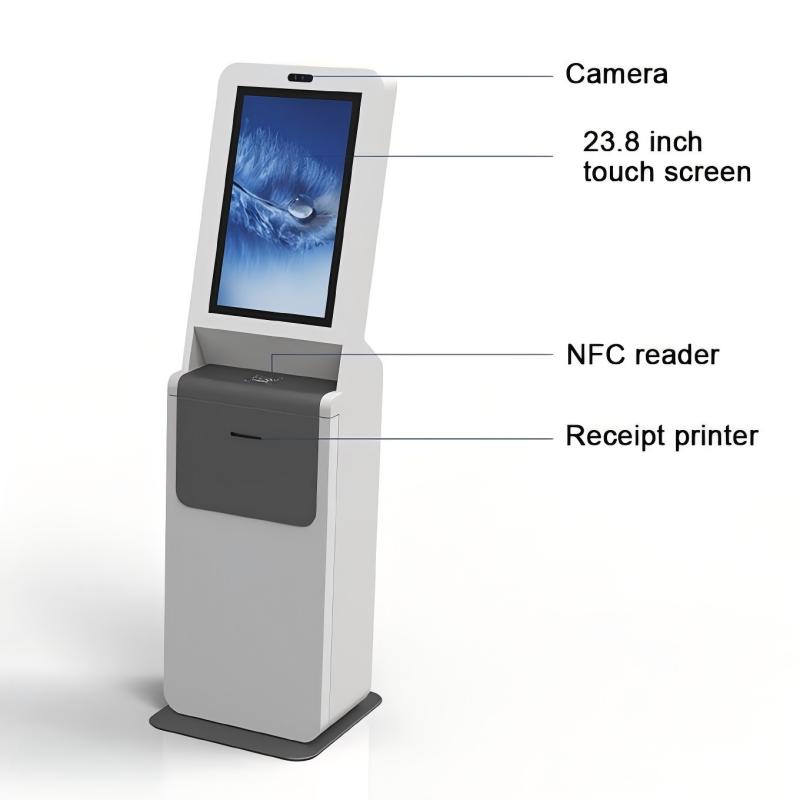
| Type | Sizes | Design | Price Range |
|---|---|---|---|
| Ticketing Kiosk | Small to Medium (40-60 in) | Compact with integrated printer and screen | $3,000 - $7,000 |
| Information Kiosk | Medium to Large (50-70 in) | Freestanding with large touch screen | $4,000 - $8,000 |
| Payment Kiosk | Medium (40-60 in) | Secure, with payment processing hardware | $5,000 - $10,000 |
| Interactive Kiosk | Large (60-80 in) | High-resolution screen, multimedia support | $6,000 - $12,000 |
| Wayfinding Kiosk | Medium to Large (50-70 in) | Detailed maps, easy-to-read display | $4,500 - $9,000 |
| Self-service Kiosk | Large (60-80 in) | Full-featured, with user-friendly interface | $7,000 - $15,000 |
Define Requirements: Assess the specific needs of your bus station, such as ticketing, information, or payment functions. Determine the required features, such as touchscreen size, printer integration, and payment options.
Research Manufacturers: Look for reputable kiosk manufacturers with experience in producing high-quality bus station kiosks. Check customer reviews, case studies, and industry certifications.
Compare Specifications: Review the specifications of different kiosk models. Focus on hardware durability, software functionality, user interface design, and ease of integration with existing systems.
Evaluate Customization Options: Choose a kiosk that can be customized to meet your specific needs. Options may include branding, screen size, housing materials, and additional features such as multimedia capabilities.
Consider Maintenance and Support: Ensure the manufacturer offers reliable support and maintenance services. Verify warranty details, repair options, and response times for service requests.
Review Cost vs. ROI: Analyze the total cost of ownership, including purchase price, installation, and maintenance. Consider the expected return on investment in terms of operational efficiency and improved customer experience.
Request Quotes and Demos: Obtain quotes from multiple manufacturers and request demonstrations of the kiosks. This allows you to evaluate the kiosk’s performance and ensure it meets your expectations before making a purchase.
What did our happy clients say?
We recently installed a bus station kiosk from Lean Kiosk System, and it's been a game-changer! The user-friendly interface and reliable performance have greatly improved our service. Highly recommend Lean Kiosk System for top-quality solutions!
The bus station kiosk we purchased from Lean Kiosk System exceeded our expectations. It’s durable, efficient, and the installation process was smooth. Our passengers love it, and so do we. Thank you, Lean Kiosk System!
We are extremely satisfied with our new bus station kiosk from Lean Kiosk System. The design is sleek, and it has significantly reduced wait times. Their customer service was outstanding. Highly recommend!
Lean Kiosk System provided us with a top-notch bus station kiosk that perfectly fits our needs. The customization options were fantastic, and the overall quality is excellent. We couldn’t be happier. Thank you!